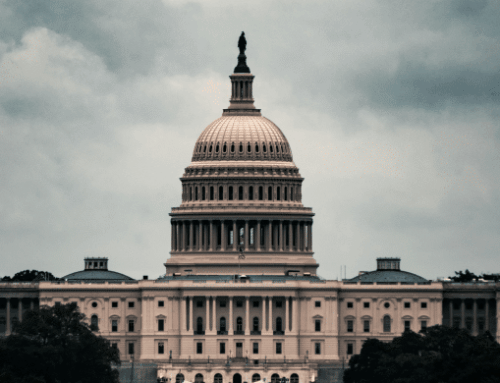As March Madness marches towards a series of epic showdowns between the Sweet Sixteen, the Elite Eight, and the Final Four, the Biden administration is in the paint weighing finalization of a procurement rule proposed by the Federal Acquisition Regulation (FAR) Council. FAR's proposed rule would require some of the largest government contractors to report on their emissions, set emissions reductions targets, and identify climate-related financial risks. Long-term taxpayer savings, as well as national security, hang in the balance like a basketball circling the rim after a three-point attempt.
The FAR is an expansive regulatory document dictating procurement policies and practices for the federal government. The FAR Council, comprised of representatives from the Pentagon, the Government Services Administration (GSA), and NASA, is responsible for setting and updating procurement policies through the FAR.
In the fall of 2022, the FAR Council proposed a new rule, entitled "Disclosure of Greenhouse Gas Emissions and Climate-Related Financial Risk," which would require large contractors to publicly disclose their emissions. For major contractors, those that received over $50 million in federal contract obligations, the rule would require more in-depth emissions reporting, science-based emissions reduction targets, and reporting on climate-related financial risks, such as risks to supply chains and manufacturing facilities posed by extreme weather events.
As we explained in comments supporting this proposed rule, implementing the rule would save taxpayers untold billions of dollars by reducing costs related to climate change, costs that have been steadily rising in the face of increasingly frequent and intense weather events and other climate-linked disasters. In our report, Paying the Price: Taxpayers Footing the Bill for Increasing Costs of Climate Change, we highlighted that between 1980 to 2007, there was only one year with more than seven extreme weather disasters costing over $1 billion each. Since 2007, only one year has seen fewer than seven billion-dollar-plus disasters.
Further illustrations abound. Presidential declarations of major disasters also tripled from 200 in the 1960s to 600 in the 2000s. In Fiscal Year 2013, average annual federal spending related to disasters rose by 35 percent. Climate resilience spending is also on the rise, with Congress appropriating $3.8 billion for the Building Resilient Infrastructure and Communities (BRIC) program from FY2020 to FY2022.
Climate change is also increasing risks to national security. The Pentagon owns a $1.2 trillion real estate portfolio and its installations around the world are vulnerable to sea level rise, hurricanes, tornados, flooding, drought, and wildfires, all of which are happening more frequently and with greater impacts than in the past. According to the Pentagon, extreme weather events cost the Pentagon $13 billion between 2017 and 2021. For example, in 2018, Hurricane Michael destroyed 99 percent of Tyndall Air Force Base in Florida, costing taxpayers $4.7 billion in damages and the base won't be fully repaired for a few more years.
Operational concerns also abound. Between 2018-2019, over 2,300 National Guardsmen and 350 active-duty military personnel were called up to help fight wildfires across the nation. In 2017, after multiple hurricanes battered the Caribbean, about 11,000 military service members supported disaster relief efforts in Puerto Rico and the U.S. Virgin Islands. As disasters continue to grow more frequent and severe, U.S. military capacity may be increasingly constrained by response needs. Military readiness is also under threat, as heatwaves, flooding, and other climate-related events force pauses in training and maintenance operations.
Climate impacts on the military industrial base are also a growing threat to national security, and likely to taxpayers as well. Military contractors are facing these same weather events at their manufacturing and research facilities, and throughout their supply chains. As Lockheed Martin put it in a report on climate-related business risks, the impacts of climate change could lead to "asset isolation due to infrastructure closures," as well as "operational schedule delays and missed program milestones." Given the way some Pentagon contracts are set up to share risks related to cost-growth between the Pentagon and its contractors, climate-related cost-growth in Pentagon contracts is likely to further increase the taxpayer burden of climate change.
As the impacts of climate change continue to get worse, the costs of those impacts to taxpayers and national security will continue to rise.
Requiring contractors to report on emissions creates a reputational incentive for companies to reduce emissions, and requiring emissions reductions targets ensures that companies are accountable for their efforts to reduce emissions. With some estimates suggesting that military industry is responsible for even more greenhouse gas emissions than the military itself, requiring leaders in the industry to track emissions and set emissions reductions targets could significantly reduce emissions and in turn mitigate climate-related costs and risks. Moreover, with about $700 billion in procurement spending annually, the federal government can incentivize these emissions reductions with minimal spending.
Cost efficiency, taxpayer savings, and major national security benefits rolled into one? For us, that's a slam dunk and one. The ball is squarely in the administration's court. Taxpayers are counting on them bringing their A game.










